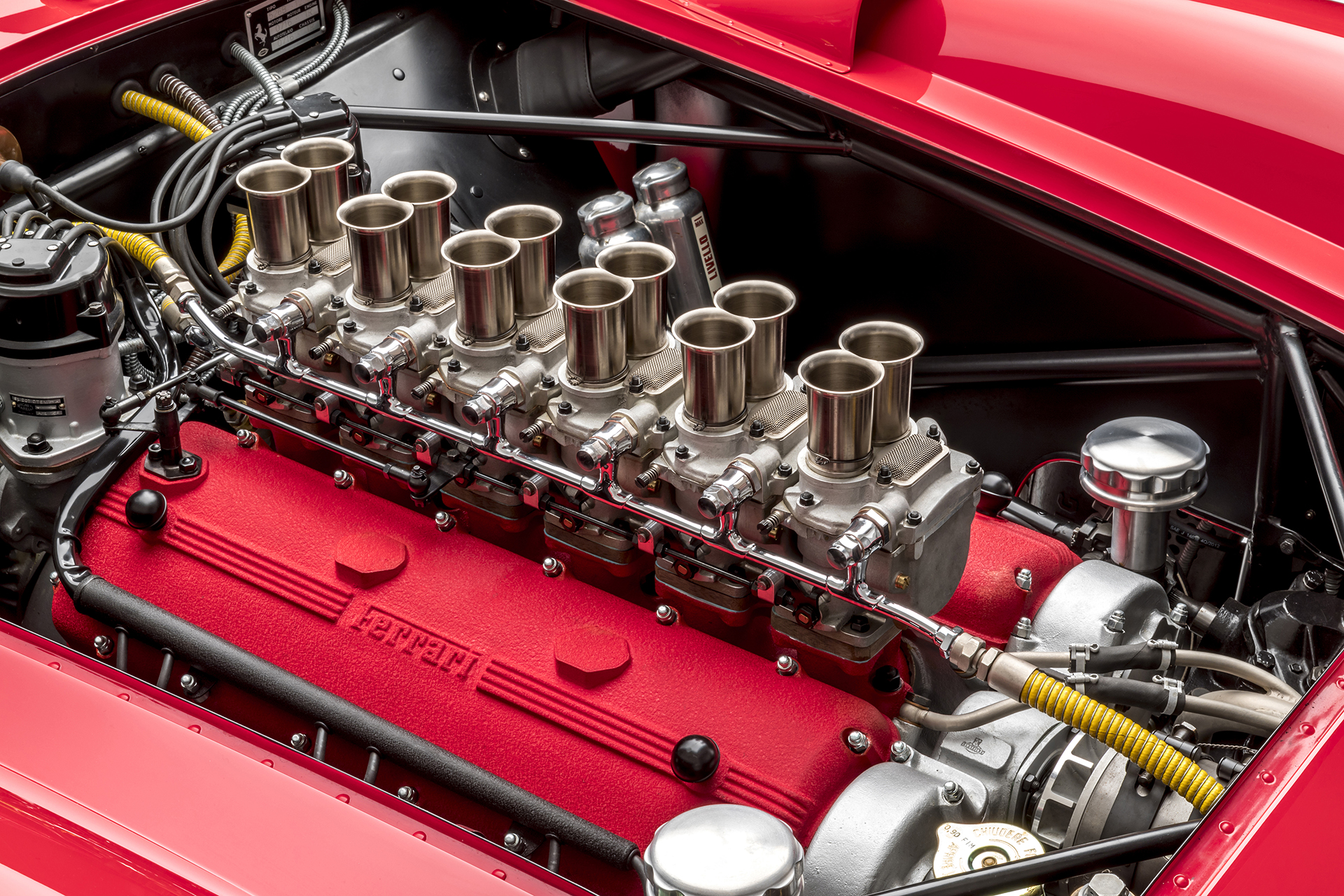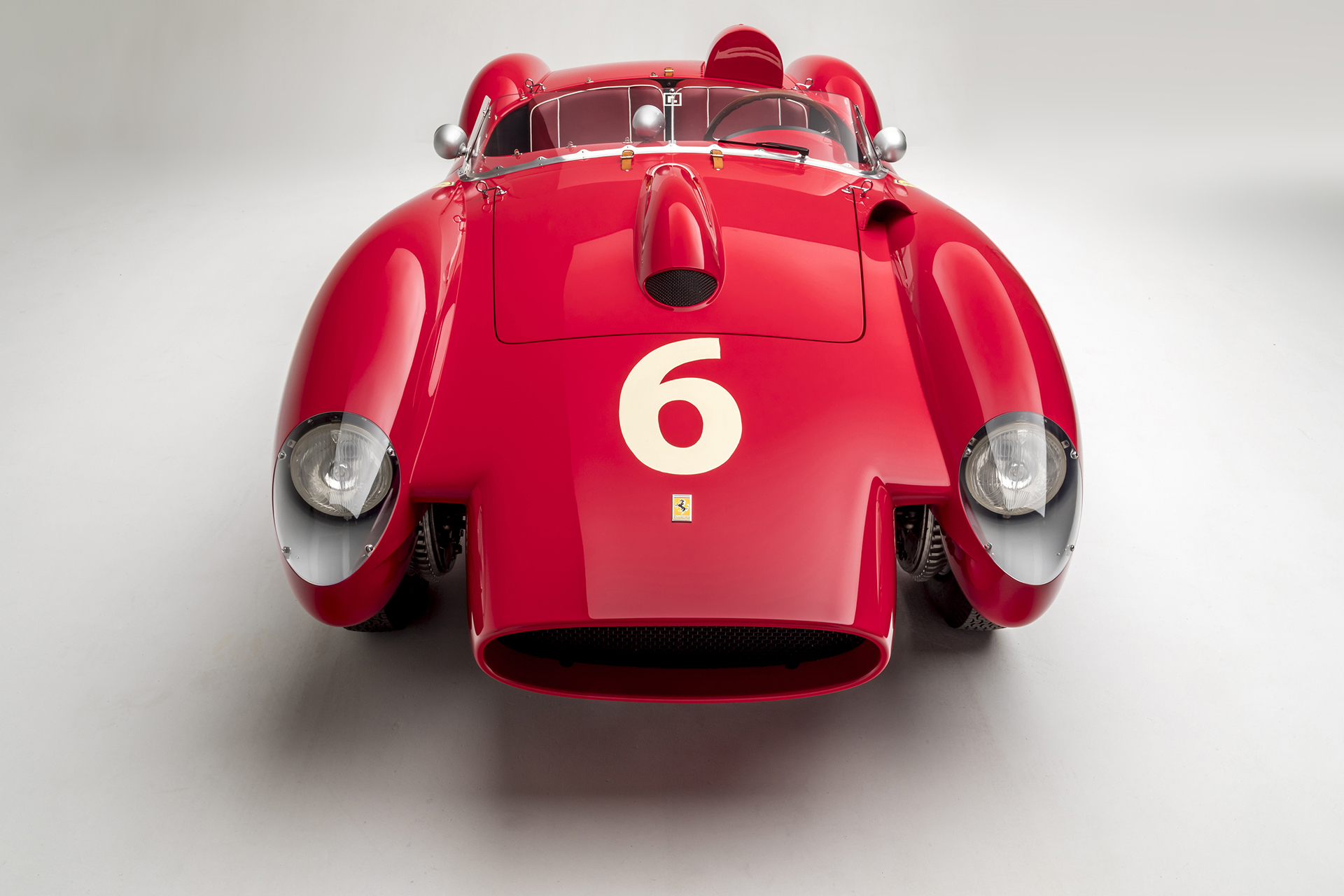Photo credit: Ferrari, Wheelsage
The idea of Sergio Scaglietti, the magical coachbuilder from Modena who worked for Ferrari during the 50s, was to make the magnificent mechanics of the new Ferrari sports car – christened Testa Rossa and destined for the World Sports Car Championships, perform even better through aerodynamics. His inspiration for the front section was from Formula 1: a distinctive cut-away nose separated from the fenders, visible front suspension and a deep recesses in the flanks to facilitate the flow of air from the brakes. At that time, and we are in the autumn of 1957, no-one imagined that even the smallest aerodynamic appendage – as today’s Formula 1 cars clearly demonstrate – could significantly change the behaviour of the car.

When the car was presented everyone found it magnificent – and still today it is the most sought after Ferrari after the GTO – but some began to doubt that beauty and performance had really combined. At high speeds, the original and beautiful shape of the car, known as a Pontoon Fender, caused the front end to lighten. The problem was so noticeable that Ferrari returned to a more conventional front section for Le Mans in 1958, Hill and Gendebien drove the modified version to victory.

Original or modified, lightly revised by Pinin Farina with fabrication of the bodies handled by Fantuzzi, from Modena like Scaglietti, the Testa Rossa is always magnificent. It was this version that won Le Mans in June 1960, while the third victory of this model, with its dramatically re-designed front air inlet that was now split into two openings, introducing the distinctive “sharknose” style, arrived in 1961.

Enzo Ferrari demonstrated that he had clearly interpreted the new regulations that limited the displacement to 3 litres for safety reasons: he chose a tubular steel spaceframe chassis, resulting in a light and agile car and the classic V12 engine that had already been proven on his Gran Turismo road and racing cars, modified but always very reliable and elastic.

Helping to create the legend around this car is, of course, its name: the cam covers were painted bright red like the Ferrari, so when the engine cover was raised, this vision inspired its timeless name “Testa Rossa” (literally, “Red Head”)
